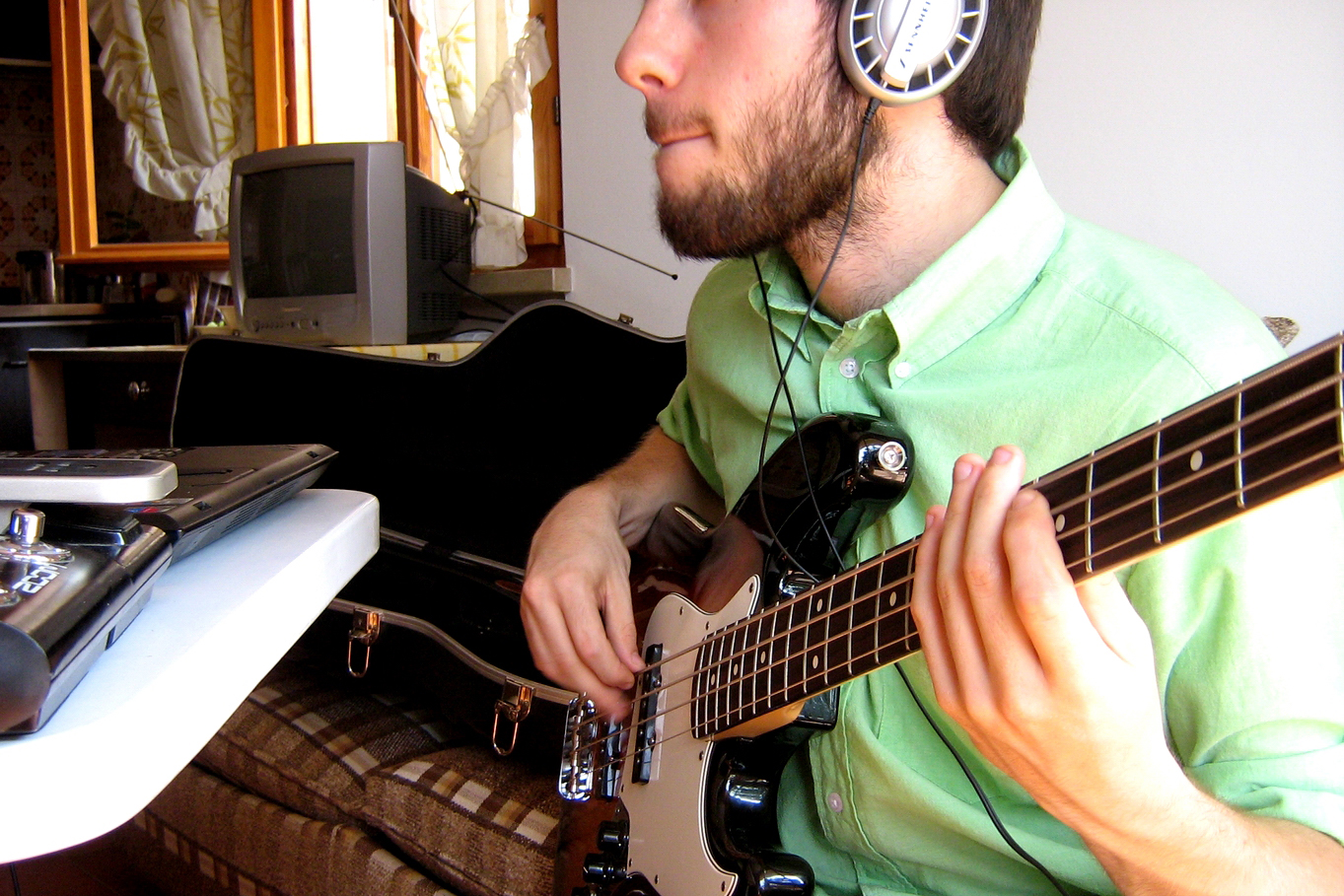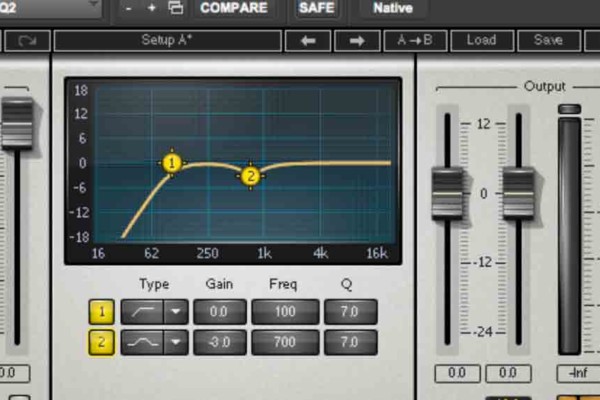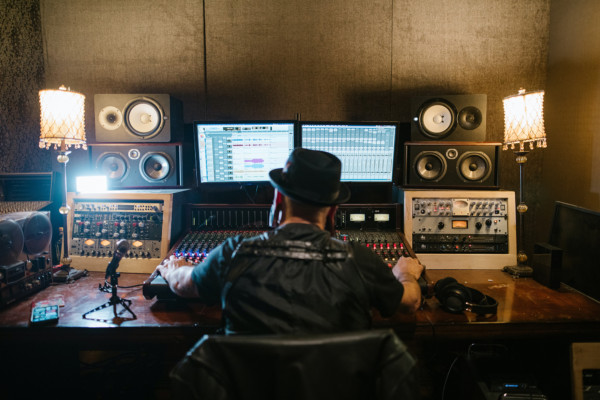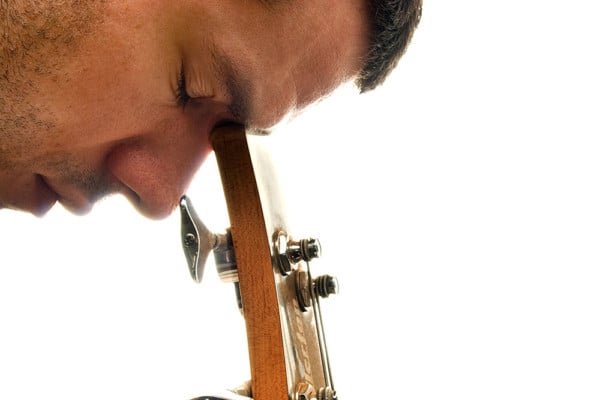What Do I Need To Record Bass At Home?

Q: What kind of gear might I need to start recording bass lines from home? I’m thinking of the ability to record for albums remotely but also to get better sound for social media videos and things along those lines. Preferably something that doesn’t cost thousands of dollars! I’m curious what you use, too.
A: It sounds like you already know that it’s entirely possible to spend unfathomable amounts of money on recording gear. There’s a line to be found and drawn between trying to be able to provide something akin to what you’d get in a studio and what you can do at home without buying $10,000 compressors and racks of outboard gear.
You absolutely don’t have to spend an extreme amount of money to create quality bass tracks.
And, of course, there is a range in what you can spend depending on your needs and budget. I’ll tell you what I use for different scenarios.
When I record tracks from home for other people’s albums, I try to just provide a clean, hi-resolution, great sounding bass track, but without using plug-ins and trying to get into compression ratios, EQ, reverb, etc. I’ll leave that up to the producer/mixing engineer/artist. I’ll give them a solid track, that they can then mold to their needs.
I like to record as direct as possible. While it’s true that you can get great sounding bass sounds plugging directly into a quality interface (we’ll talk about those in a minute), I like to use a nice DI (direct box) in order to control and tailor my sound just a little bit. But here, I still keep it simple.
I have two DI’s that I use, depending on the situation.
DI boxes:
If I’m using effects at all in the signal chain or want to tweak my EQ a bit to get closer to a certain kind of tone, I’ll use my Basswitch IQ/DI from Ruppert Musical Instruments.
This DI has a great EQ (very clean and quiet that seems to tweak all the right frequencies) with two effects loops, XLR out as well as having a built in A/B box with 2 inputs and a boost pedal with controllable gain. It does a lot and sounds very good.
If I’m just going for a great bass sound, I grab my RedDI from A-Designs Audio. It’s basically just a tube and gain knob but it sounds absolutely wonderful. It won’t take a crappy sound and turn it to gold, mind you, but it will give you a beautifully pure, warm and full representation of what you give it.
Those are the two DI’s I use to represent “my sound.” Yes, they both cost a little bit of money and there are cheaper options that will still give you a great sounding DI but these are what I trust my tone to, personally. If it’s a little steep for you, I’d check out various forums online and see what other folks are using and talking about. Either way, I absolutely think it’s worth investing in a good DI box. They can also be nice to have on certain gigs because you won’t have to trust the venue or sound company to have something worth using.
Interface:
The interface is what you will plug into from your instrument or DI with either your quarter-inch cable or an XLR from the DI. The interface is the bridge between your instrument and the computer. This is where the sound gets turned into something that will work with your DAW (digital audio workstation). Basically, Protools, Logic, Digital Performer or whatever software you might be using to record the music.
For many years, I went with a straight two-channel ProTools M-Box interface. They work well, have two inputs (plenty if you’re only recording one bass track) and sound ok. I have since moved onto Focusrite interfaces because they just sound better to my ears. I can plug my bass straight in for videos and it’ll sound wonderful (or even album tracks but I don’t. I use a DI for those). I don’t know much about the technicalities but I believe much of the magic happens with regard to the quality of the converters. You seem to get what you pay for here.
These days, I use the Focusrite Clarett interfaces. I use the 8pre for home recording which has 8 inputs, so I can record rehearsals and demos that actually sounds pretty decent. I also have a 2pre that I bring with me if I need to record while on the road or away from my home setup. The Clarett series uses Thunderbolt and is a little more costly but the Scarlett series (USB) also sounds great but will also save you a few bucks.
Universal Audio also makes top grade interfaces that sound phenomenal but tend to be just a little more expensive than Focusrite. Like I said, you get what you pay for and I decided that Focusrite was where I struck my personal balance between cost and end product.
Both of those choices are also a little pricey. There are a number of options, but it’s all a matter of quality, usability, build quality and end result. I also use a Roland Go:Mixer for recording quick demos in hotel rooms, shedding away from home, doing a quick but decent video with decent sound on my phone, etc. It’s pretty handy and does what it does well. The build quality feels a touch on the cheap side but it performs well and has held up well, so far. I would record tracks for somebodies album with it but it can be a great place to start producing content on a budget.
DAW:
Your DAW (digital audio workstation) is the software you want to use to record your tracks. There are a ton of choices and most people base their preferences off of the usability and perceived logic of the use of the software. It’s very subjective. Your needs come into play here as well. If you want to manipulate MIDI tracks, for example, you might want Digital Performer. Pro Tools seems more logical to some people, while others swear by Logic. I’ve owned and used most of the top contenders and they are all learnable and capable. I probably prefer Pro Tools at the end of the day simply because it is most intuitive for me but I am currently using Logic because my computers current operating system (OS) is incompatible with my version of Pro Tools. It works great for me as well.
When in doubt, pull up tutorials and demos on YouTube. Read the manual. The answers to whatever question you may have is out there and it doesn’t take too long to figure it out. This is especially true if you’re just recording bass tracks and not getting into the heavy use-age of plug-ins. You can get as complicated or remain as simple as you choose. You can built complicated tempo maps or just get a level and hit record. It doesn’t take much to get proficient recording your own bass tracks.
Just as with video, there endless gear possibilities that will lead to any number of results of varying quality. I think it important to educate yourself as much as possible. Read blogs and forums, listen to demos on YouTube (with headphones on), look up reviews and comparisons. Figure out what your budget is, map out prices, get an idea of what you might want and give it a shot!
Based on what options I’ve laid out, you can get a solid rig going for around $1,000 to $1,500 (DI, DAW, and Interface). Compared to the millions spent in the studio for all of that outboard gear, mixing board, etc., that isn’t too bad (computer not included).
I’d prioritize your intended uses as well as organize the gear you feel you need vs. the gear you want. You can always chunk away at the list over time as it doesn’t take much to get going at a useable quality level. You can always just use your phone and a Go:Mixer for a quick and dirty start to content creation that does what it needs to do but, if you’re thinking of recording professional tracks from home, I would try and, at the very least, get yourself a good interface and choose your software. You can always add a DI later but, with a quality interface, you can really start creating perfectly useful and hi quality bass tracks right out of the gate.
I don’t have a ton of experience but I know folks who do. I asked a handful of mixing and recording engineer buddies for advice and found my happy place with regard to quality vs initial financial output. I’m sure that many of you reading this are more knowledgeable than I and I would love for you to all chime in! I’m just capable enough to record a quality bass track and export it, or haphazardly throw up some mics and record a rehearsal (for reference).
Do your research and try to contain yourself. It’s easy to dream big when it comes to recording gear!
Have a question for Damian Erskine? Send it to [email protected]. Check out Damian’s instructional books, Right Hand Drive and The Improviser’s Path.



